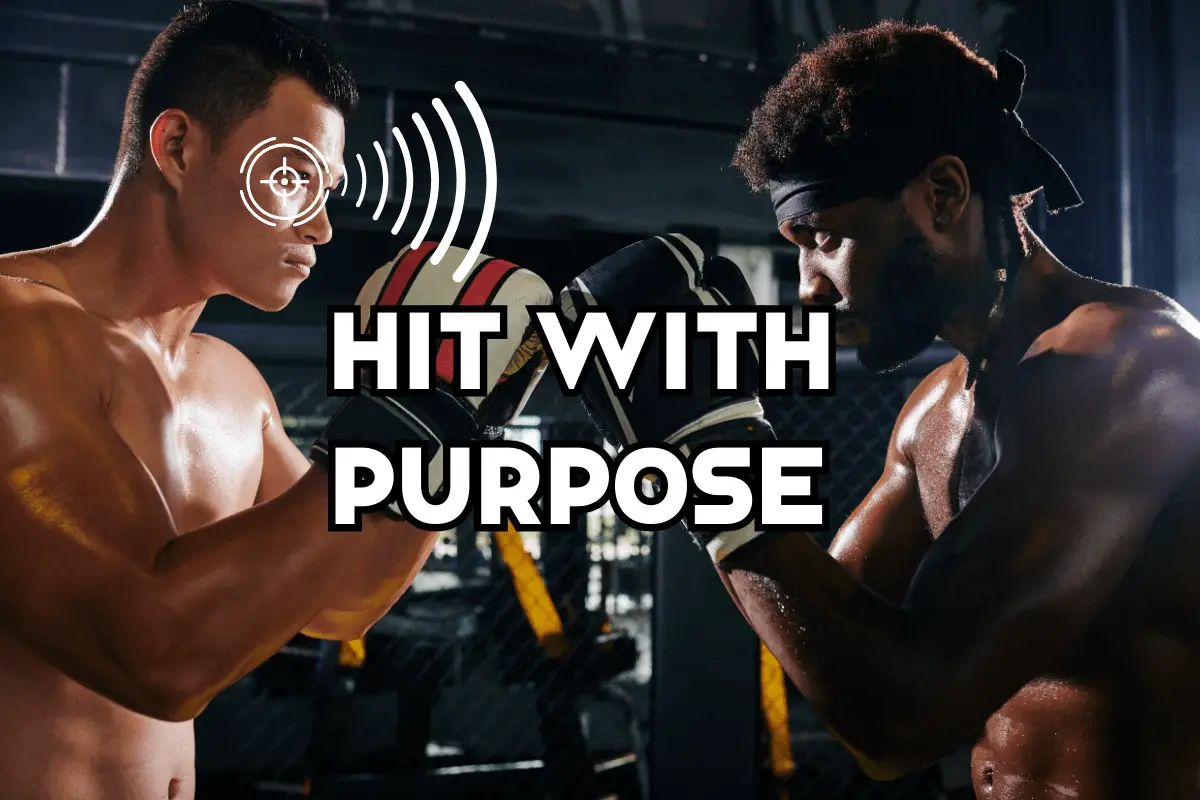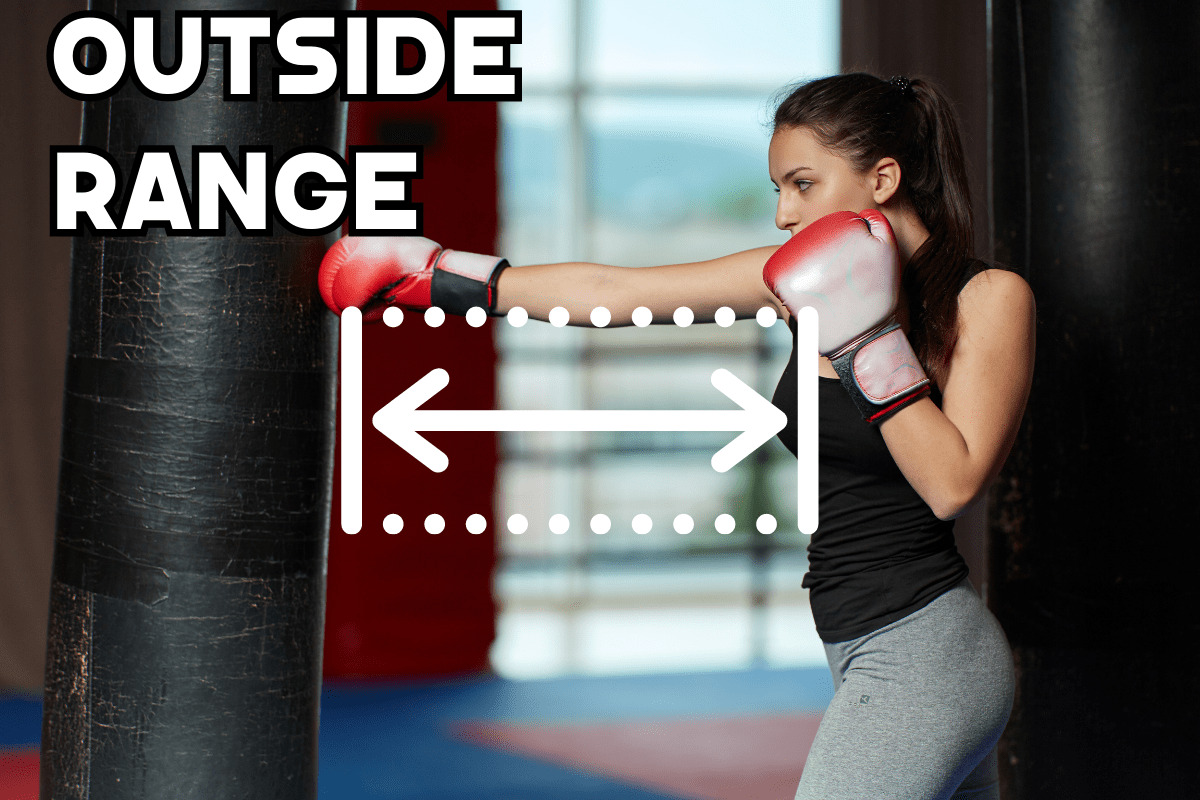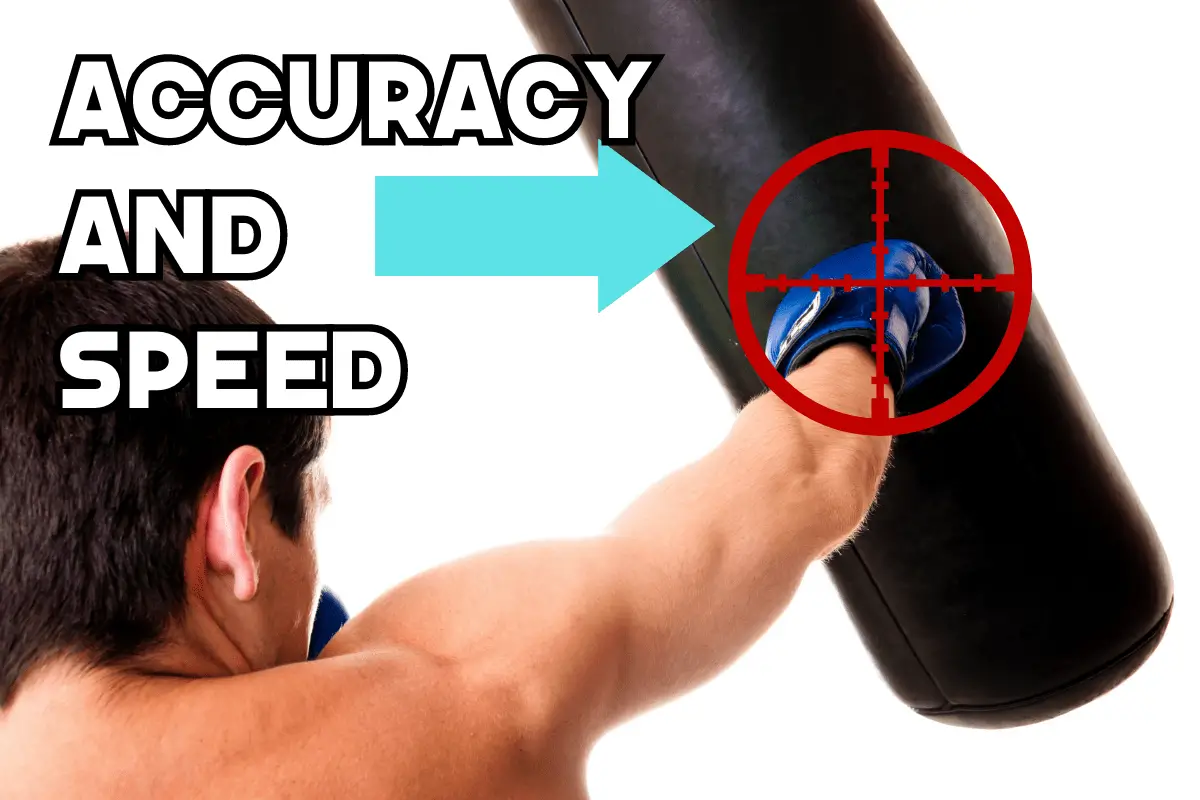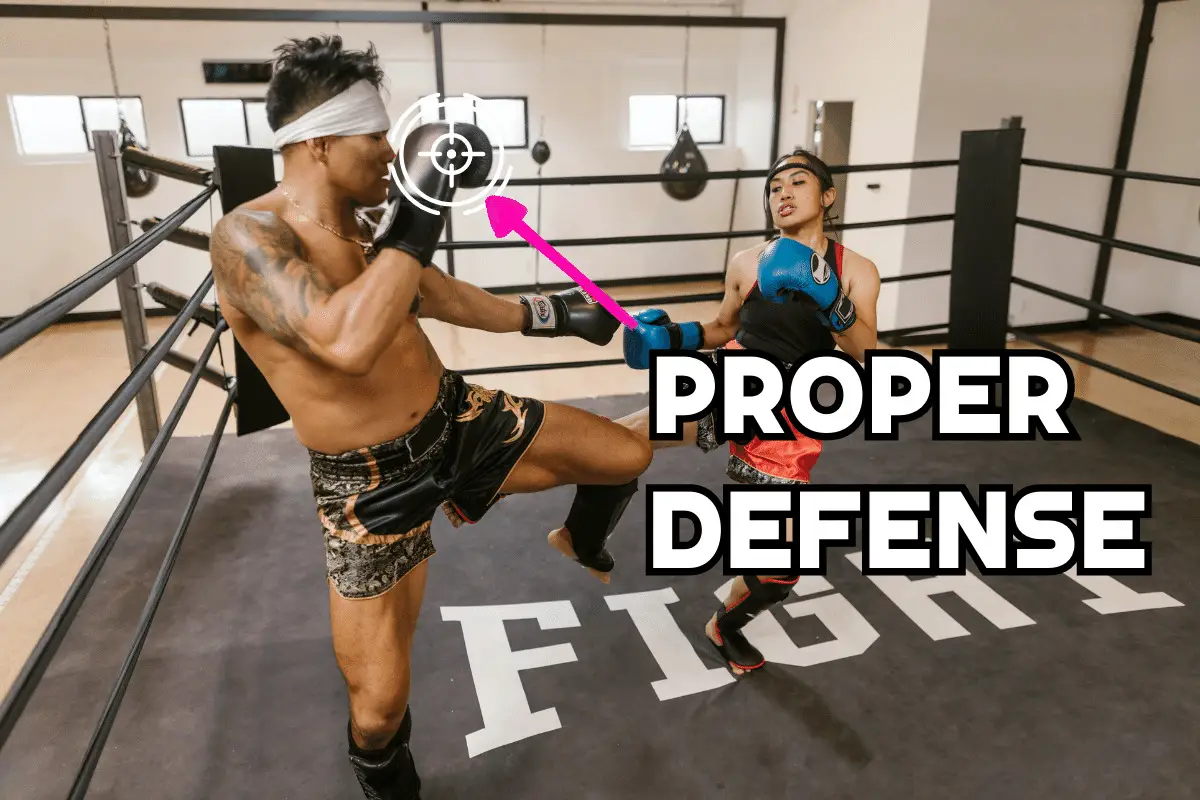This is going to be a complete breakdown of the Jab, which is one of the most important strikes in all of martial arts, and more specifically, in Muay Thai. What’s so important about knowing to use the Jab is the number of offensive opportunities it unlocks for you as a fighter. First, however, let’s see what it is.
The jab is a punch you throw with your weak hand and is the opening attack for many combinations, such as the 1-2 (Jab–Cross) and the 1-2-3 (Jab–Cross–Hook.) Nonetheless, it’s the weakest type of strike, as it doesn’t allow you to generate a lot of power and momentum, unlike the Hook and the Cross.
So if it’s the weakest punch, why should we even bother to learn it? The truth is, it’s the opener to many combinations, and it’s the opening attack for a good reason; it’s quick, it’s surprising, and it can still cause a lot of damage while ensuring your opponent is confused.
Pace is a critical component of being a solid Muay Thai fighter. You must ensure you’re acting quickly and with purpose. So if you’re just throwing any punches around, you won’t be able to cause nearly as much damage or be nearly as effective as if you were to fight with purpose.
This article is going to break down the Jab, one of the most important and beautiful strikes in Muay Thai. This article will also focus on Muay Thai, aka Thai Boxing, specifically.
So let’s dive in!
How to Throw a Perfect Jab in Muay Thai
The first part of this article will be about execution. What we’ll do is break the Jab down to its deepest components. You want to know how to perfect the smallest components of this punch. If you’ll do that, you’ll notice immediate results in speed, power, and effectiveness when using the Jab.
Here’s a simple explanation of how to Jab properly in Muay Thai:
To throw a jab, extend your lead hand (left hand for right-handed fighters) straight out from your chin, rotating your fist so that the palm is facing downward. Keep your other hand up for defense. Lastly, you should also step forward with the same-side leg when throwing the Jab to generate more power.
Throwing a mean Jab has many components and factors influencing whether you’re able to do that. You might not be able to generate a lot of force, which is natural for beginners. However, as you master the small details of this punch, you’ll be able to amp up the power quickly and effectively.
So what we’ll do next is dive into 4 factors influencing the effectiveness and amount of power you’ll be able to generate with your strikes.
Let’s dive into the first one; purpose!
Point #1 – Purpose
The first key point you must understand is the reason you want to use this punch in the first place. And frankly, there are plenty of reasons to use it, and in many different situations.
The Jab serves several purposes in Muay Thai. It can be used to maintain distance, set up combinations, probe the opponent’s defense, and disrupt their timing. It is often the first punch thrown in a combination.

So if you’re interested in learning more about combinations, which are critical to learn and understand to become a better, more dynamic, and more aggressive Muay Thai disciple, the Jab is the first place you should visit.
We’ll review combinations in the upcoming sections of this article, so stay tuned for that.
Point #2 – Range
The 2nd point we’ll review is range. This is a key point to understand to ensure you’re using the Jab safely and effectively. That means that if you get this point wrong, you’re more than likely to get hit back in the face with a powerful strike, such as the Hook and Uppercut.
The Jab is most effective when thrown from the outside range, where you can hit your opponent without getting hit in return. It allows you to gauge the distance and control the pace of the fight.
So the next time you throw the Jab, ensure you’re not in range to get combo’d by your opponent. For instance, let’s assume you throw a Jab and you were closer to your opponent than where you should be (outside his reach.) How do you think your opponent will react?
Truth is, we can never know. However, your opponent will likely counter with any of his arsenal techniques, preferably close-range strikes, such as the Straight Elbow. And trust me, getting hit by a Straight Elbow isn’t that nice.

Point #3 – Speed and Accuracy
The Jab is typically a fast and snappy punch designed to score points, keep the opponent on the defensive, and create openings for follow-up strikes. Accuracy is crucial to land clean shots and avoid getting countered.
I’ve decided to combine speed and accuracy into a single point for one primary reason: they have the same effect on the opponent. If one were to be missing, the equation would be unsolvable. You would give your opponent opportunities to attack if you miss either speed or accuracy.
That’s why it’s critical you work on these two factors when working on your Jab.
To work on your accuracy, you want to use a punching bag. You want to look at one point of the punching bag and aim for it; the perfect case scenario is that you hit it every single time. However, that’s unlikely to be the case.
The second thing you want to work on is speed, which you develop through repetition. But first, you must start slow and perfect your technique. The last thing you want is to have speed but lack the power that comes from technique.

Point #4 – Defense
For the last point, I’d like to discuss the other side of the coin, which people tend to forget when learning to fight. The last point of perfecting your Jab is your defense. This is critical because many of your opponents will try to counter your punch, as that’s our natural instinct.
Therefore, throwing a Jab, it’s essential to retract your hand quickly to maintain your guard and avoid leaving yourself open to counterattacks. Good footwork and head movement are also crucial for avoiding your opponent’s strikes.
I’ve covered footwork and head movements in Muay Thai in another article of mine, which you can read by following this link.

So make sure to cover all four of these points when practicing the Jab. That way, you’ll be more likely to perfect your execution and cause much more damage to begin with.
And now, let’s dive into combinations that start with the Jab. These are critical to know to become a solid fighter.
Jab Combinations in Muay Thai
So now that you know how to execute the Jab flawlessly, it’s time we dive into the more advanced techniques. If you’re a beginner Muay Thai trainee, I recommend practicing what you have learned thus far to ensure your technique is perfect before diving into advanced techniques.
This section is going to be about combinations. Combining techniques is a skill you must become proficient in to ensure you can cause a lot of damage quickly. The most common combination is the 1–2, which is the Jab followed by the Cross.
Here are the best Muay Thai combinations that involve the Jab.
- Jab-Cross-Hook: Start with a jab from your lead hand, followed by a powerful cross with your rear hand, and finish with a hook from your lead hand. This combination allows you to establish range with the jab, capitalize on the opening with the cross, and finish with a hook to exploit any openings on your opponent’s side.
- Jab-Teep: Begin with a jab from your lead hand and immediately follow it with a teep (push kick) from your lead leg. The jab serves to distract or create an opening, while the teep helps you maintain distance or push your opponent back.
- Jab-Cross-Low Kick: Throw a jab with your lead hand, then quickly follow it up with a cross from your rear hand. Immediately after the cross, execute a low kick targeting your opponent’s lead leg. This combination is effective for attacking both the upper body and lower body of your opponent.
- Jab-Cross-Left Knee: Start with a jab, followed by a cross. After the cross, quickly bring your lead leg up and drive your left knee forward, targeting your opponent’s midsection. This combination allows you to utilize the power of your punches and follow up with a devastating knee strike.
- Jab-Slip-Cross-Left Hook: Begin with a jab, then slip to the outside as you throw a cross with your rear hand. As you slip, quickly pivot your body and unleash a powerful left hook to your opponent’s head or body. This combination takes advantage of evasive movement and delivers a powerful hook at an unexpected angle.
- Jab-Overhand Right-Left Kick: Start with a jab from your lead hand, followed by an overhand right punch with your rear hand. After the overhand right, transition smoothly into a left kick targeting your opponent’s body or legs. This combination combines punching power with a strong kick to maximize your offensive capabilities.
Variations of the Jab in Muay Thai
The last part of this article is going to be about variations. While the “standard” version of the Jab is enough to start using it, you want to expand your knowledge base and continue implementing more and more versions of this type of punch.
Here are some of the more common variations of the Jab in Muay Thai:
- Double Jab
- Feint Jab
- Power Jab
- Step-in-Jab
- Traditional Jab
- Snapping Jab
- Uppercut Jab
- Slipping Jab
- Body Jab
- Switch Jab
Let’s review some of them:
Double Jab: when you throw two consecutive and rapid Jabs (with the same hand.)
Power Jab: when you focus on generating more force with your Jab rather than focusing on speed.
Step-in-Jab: when you throw a Jab while stepping inside the opponent’s range.
Slipping Jab: when you slip a punch from your opponent while throwing a Jab to counter.
Body Jab: when you throw a Jab to your opponent’s body.
Switch Jab: when you switch your lead leg and arm and throw a Jab with your new lead arm to confuse the opponent.
Final Words
Remember that while the Jab is an important tool in Muay Thai, it is just one of many techniques that make up the arsenal of a skilled fighter. Practice, timing, and the ability to set up combinations are essential for utilizing the Jab effectively in the context of Muay Thai.
If you want to continue learning about more types of punches so you can become a better fighter, follow this link to read about the best types of punches in Muay Thai that you must learn to call yourself a fighter.
Here are other articles you’d enjoy reading:
How to Perfect Your Muay Thai Fighting Stance – Guide
9 Amazing Benefits Muay Thai Training Will Give You

